#house history
Text

Constructed in 1861, this Victorian Gothic mansion in Southport, Connecticut, stands out amongst the many classically inspired homes nearby. Designed by Bridgeport architects Lambert & Bunnell for Moses Bulkley (1796-1868).
📸: buildingsofnewengland | IG
#victorian architecture#historic house#gothic#exteriors#historic properties#home & lifestyle#architecture#Victorian#vintage#conneticut#house history
184 notes
·
View notes
Text

LOCAL HISTORY PROGRAM
Researching the History of Your Home
House history classes are back! Check out the Hennepin County Library events calendar for classes in September at Northeast Library, October at East Lake Library, and November at Arvonne Fraser Library.
Learn about the historical resources at the library and across the county that will help you piece together a history of your Minneapolis house, neighborhood or property. Staff from Hennepin County Library's Special Collections will explain and demonstrate resources, emphasizing online resources in the Digital Collections that will allow you to jump-start your research from home – including permit records, maps, city directories, photos and more. This class is best suited for researching properties located in the city of Minneapolis, though some county-wide resources will be discussed.
Register online!
28 notes
·
View notes
Text

all RIGHT:
Why You're Writing Medieval (and Medieval-Coded) Women Wrong: A RANT
(Or, For the Love of God, People, Stop Pretending Victorian Style Gender Roles Applied to All of History)
This is a problem I see alllll over the place - I'll be reading a medieval-coded book and the women will be told they aren't allowed to fight or learn or work, that they are only supposed to get married, keep house and have babies, &c &c.
If I point this out ppl will be like "yes but there was misogyny back then! women were treated terribly!" and OK. Stop right there.
By & large, what we as a culture think of as misogyny & patriarchy is the expression prevalent in Victorian times - not medieval. (And NO, this is not me blaming Victorians for their theme park version of "medieval history". This is me blaming 21st century people for being ignorant & refusing to do their homework).
Yes, there was misogyny in medieval times, but 1) in many ways it was actually markedly less severe than Victorian misogyny, tyvm - and 2) it was of a quite different type. (Disclaimer: I am speaking specifically of Frankish, Western European medieval women rather than those in other parts of the world. This applies to a lesser extent in Byzantium and I am still learning about women in the medieval Islamic world.)
So, here are the 2 vital things to remember about women when writing medieval or medieval-coded societies
FIRST. Where in Victorian times the primary axes of prejudice were gender and race - so that a male labourer had more rights than a female of the higher classes, and a middle class white man would be treated with more respect than an African or Indian dignitary - In medieval times, the primary axis of prejudice was, overwhelmingly, class. Thus, Frankish crusader knights arguably felt more solidarity with their Muslim opponents of knightly status, than they did their own peasants. Faith and age were also medieval axes of prejudice - children and young people were exploited ruthlessly, sent into war or marriage at 15 (boys) or 12 (girls). Gender was less important.
What this meant was that a medieval woman could expect - indeed demand - to be treated more or less the same way the men of her class were. Where no ancient legal obstacle existed, such as Salic law, a king's daughter could and did expect to rule, even after marriage.
Women of the knightly class could & did arm & fight - something that required a MASSIVE outlay of money, which was obviously at their discretion & disposal. See: Sichelgaita, Isabel de Conches, the unnamed women fighting in armour as knights during the Third Crusade, as recorded by Muslim chroniclers.
Tolkien's Eowyn is a great example of this medieval attitude to class trumping race: complaining that she's being told not to fight, she stresses her class: "I am of the house of Eorl & not a serving woman". She claims her rights, not as a woman, but as a member of the warrior class and the ruling family. Similarly in Renaissance Venice a doge protested the practice which saw 80% of noble women locked into convents for life: if these had been men they would have been "born to command & govern the world". Their class ought to have exempted them from discrimination on the basis of sex.
So, tip #1 for writing medieval women: remember that their class always outweighed their gender. They might be subordinate to the men within their own class, but not to those below.
SECOND. Whereas Victorians saw women's highest calling as marriage & children - the "angel in the house" ennobling & improving their men on a spiritual but rarely practical level - Medievals by contrast prized virginity/celibacy above marriage, seeing it as a way for women to transcend their sex. Often as nuns, saints, mystics; sometimes as warriors, queens, & ladies; always as businesswomen & merchants, women could & did forge their own paths in life
When Elizabeth I claimed to have "the heart & stomach of a king" & adopted the persona of the virgin queen, this was the norm she appealed to. Women could do things; they just had to prove they were Not Like Other Girls. By Elizabeth's time things were already changing: it was the Reformation that switched the ideal to marriage, & the Enlightenment that divorced femininity from reason, aggression & public life.
For more on this topic, read Katherine Hager's article "Endowed With Manly Courage: Medieval Perceptions of Women in Combat" on women who transcended gender to occupy a liminal space as warrior/virgin/saint.
So, tip #2: remember that for medieval women, wife and mother wasn't the ideal, virgin saint was the ideal. By proving yourself "not like other girls" you could gain significant autonomy & freedom.
Finally a bonus tip: if writing about medieval women, be sure to read writing on women's issues from the time so as to understand the terms in which these women spoke about & defended their ambitions. Start with Christine de Pisan.
I learned all this doing the reading for WATCHERS OF OUTREMER, my series of historical fantasy novels set in the medieval crusader states, which were dominated by strong medieval women! Book 5, THE HOUSE OF MOURNING (forthcoming 2023) will focus, to a greater extent than any other novel I've ever yet read or written, on the experience of women during the crusades - as warriors, captives, and political leaders. I can't wait to share it with you all!
#watchers of outremer#medieval history#the lady of kingdoms#the house of mourning#writing#writing fantasy#female characters#medieval women#eowyn#the lord of the rings#lotr#history#historical fiction#fantasy#writing tip#writing advice
29K notes
·
View notes
Text
DPxDC prompt: Danny Phantom is an extremely high-level threat due to his capabilities and experience battling against his ghostly enemies. Batman is creating a contingency plan for him and Constantine's advice, as the one who dances the tango with the Infinite Realms? A bone-weary sigh of "plop him down a telly and put on a NASA documentary or something. It's like you haven't been dealing with teen kids for decades now fer fuck's sake."
#danny phantom#danny fenton#dc x dp#dp x dc#dp x dc prompts#batman#john constantine#lowkey but Constantine's been dealing with this snarky teen for a while now#in denial that he's practically Danny's weird uncle and honorary Fenton#Dealer's choice on how they met but I'd like it to be as chaotic as possible#who will win? a british disaster or a schrodinger's american boi#the house of mysteries likes Danny better#they team up to keep Constantine on his toes#Constantine has no qualms using Danny's Obsession to get five minutes of relaxation#and Danny has no qualms bringing up Constantine and Clockworks...#ehem#“history” together
4K notes
·
View notes
Text

Corgarff Castle, Corgaff, Aberdeenshire, North-East Scotland,
Credit: Mysterious
#art#design#architecture#history#luxury lifestyle#style#luxury house#luxury homes#castle#scotland#retreat#winter#corgarff castle#aberdeenshire#corgarff#mysterious
5K notes
·
View notes
Text
I'm at the Boston Massacre site
I'm at the SweetGreen
I'm at the combination Boston Massacre site and SweetGreen
#history#US history#boston#revolutionary war#(I'm actually not; I just find it wryly amusing that that's a Thing)#(the plaque is in front of the Old State House but the actual action happened across the street)
6K notes
·
View notes
Text
Historical house tours are so confusing. They’ll be like, “When we head upstairs, pay special attention to the Blue Room, where Colonel Thomas J. Shmoshington carved a suggestive message on the bedpost.”
And you’ll walk into a room with bright blue walls and be like, “Oh, I guess this is the Blue Room?”
And they’ll be like, “NO! This is the Red Room! It’s called the Red Room because of the red velvet curtains and canopy bed!” Then they take you into a white room with yellow floral wallpaper trim and go, “THIS is the Blue Room!”
And when you humbly ask why it’s called the Blue Room, they’ll scoff at you like you were born yesterday (rather than in 1789) and be like, “It’s called the Blue Room because it USED TO BE blue! The entire mansion is painstakingly restored to its appearance in the year 1812, which happens to fall during the two-year span in in which Abigail Shmaddison redid the room in white and yellow in a flight of fancy. After spending some time away in a sanitarium, she regained her senses and changed it back to blue. An archaeologist found an original scrap of the yellow wallpaper beneath 13 layers of paint and we were able to match it perfectly with this pattern, which was of course developed by Q.B. Zippitydoo & Sons in London and available for purchase only in 1812. Any more questions?”
So you hold your tongue until you enter a big green room that is so incredibly green that it can’t possibly be anything but the Green Room. It has acid green walls. It has bright green curtains. It has forest green tablecloths. There are ivy motifs carved in the ceiling. Cautiously, you venture, “So this is the Green Room?”
And they say, “NO! This is the parlor!”
14K notes
·
View notes
Text
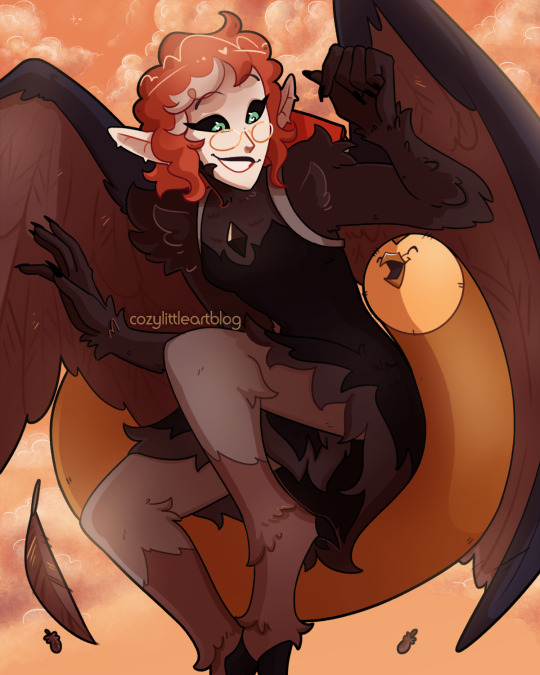
i now understand how certain people felt when harpy eda was revealed 😳
prints here
#toh#the owl house#toh fanart#lilith clawthorne#hooty#toh finale#watching and dreaming#captioned#WOW. WOOO OW. GOODNESS. MA'AM. QPR PLEASE??? PLEASE??? WOW#i both literally am her and i want to kiss her. Wow!#she is the ideal woman. her particularly early 20th century fashion sense. she's a big nerd. she appreciates history. she's aroace. she's a#bird lady who can fly. she has curly hair. Oh Jeez It Does Not Get Better Than That#sorry anyway i cant believe i won twice in a row with ladies (queen and lilith) who are specifically tailored to me and no one else /j#digital art#illustration#a small victory against my art block even though this took like 4 or 5 days to chip through. but i did it#there are some parts i feel a little clueless about so#critiques welcome#lilith please pick me up and fly my gay ass off into the sunset please im beg
8K notes
·
View notes
Text
The Ultimate Dark Academia Book Recommendation Guide Ever
The title of this post is clickbait. I, unfortunately, have not read every book ever. Not all of these books are particularly “dark” either. However, these are my recommendations for your dark academia fix. The quality of each of these books varies. I have limited this list to books that are directly linked to the world of academia and/or which have a vaguely academic setting.
Dark Academia staples:
The Secret History by Donna Tartt
If We Were Villains by M.L. Rio
Dead Poets Society by Nancy H. Kleinbaum
Vita Nostra by Maryna Dyachenko
Dark academia litfic or contemporary:
Bunny by Mona Awad
The Idiot by Elif Batuman
These Violent Delights by Micah Nemerever
White Ivy by Susie Yang
The Cloisters by Katy Hays
Never Let Me Go by Kazuo Ishiguro
The Lake of Dead Languages by Carol Goodman
A Separate Peace by John Knowles
Black Chalk by Christopher J. Yates
Attribution by Linda Moore
Dark academia thrillers or horror:
In My Dreams I Hold a Knife by Ashley Winstead
The Maidens by Alex Michaelides
Ghosts of Harvard by Francesca Serritella
Catherine House by Elisabeth Thomas
Plain Bad Heroines by Emily M. Danforth
They Never Learn by Layne Fargo
The It Girl by Ruth Ware
Never Saw Me Coming by Vera Kurian
Dark academia fantasy/sci-fi:
Babel: An Arcane History by R.F. Kuang
The Atlas Six by Olivie Blake
Ninth House by Leigh Bardugo
A Lesson in Vengeance by Victoria Lee
The Starless Sea by Erin Morgenstern
Vicious by V.E. Schwab
A Discovery of Witches by Deborah Harkness
The Betrayals by Bridget Collins
Dark academia romance:
Gothikana by RuNyx
Alone With You in the Ether by Olivie Blake
Dark academia YA or MG:
Truly Devious by Maureen Johnson
A Deadly Education by Naomi Novik
Ace of Spades by Faridah Àbíké-Íyímídé
The Raven Boys by Maggie Stiefvater
Legendborn by Tracy Deonn
Crave by Tracy Wolff
Wilder Girls by Rory Power
The Harry Potter series by J.K. Rowling
Dark academia miscellaneous:
My Dark Vanessa by Kate Elizabeth Russell
Disorientation by Elaine Hsieh Chou
Alphabet of Thorn by Patricia A. McKillip
#dark academia#dark academia books#dark academia aesthetic#poc dark academia#light academia#chaotic academia#books and literature#book blog#ya books#books#book recs#book recommendations#the secret history#if we were villains#babel an arcane history#the atlas six#ninth house#legendborn#dead poets society#bookblr#bookstagram#academia#academic#bookish#vicious ve schwab#the maidens#the raven boys#vita nostra
10K notes
·
View notes
Text

Captain Francis Crozier, at Furthest North.
#the terror amc#francis crozier#my art#can't believe it took me 2 rewatches AND getting refs for this to realize it's the hungarian state opera house. girl i was there last month#anyway yeah i was looking at gifsets of the last shot of the show and feeling nauseous with emptiness etc etc when#the thought struck me that it looks an awful lot like the tableau vivants from the ep1 flashbacks in its stillness#i have no idea whether that was an intentional reference (a sort of twisted mockery of how that scrubbed and polished portrayal of history#contrasted with the deeply sad and inglorious reality#or some sort of meta about storytelling itself. i'm not really smart enough to say lol) but i made this anyways. enjoy#pattern recognition go brrrrrrrrrrrrrr#i bent over backwards trying to make this symmetric and harmonious. it isn't but if i don't post it now i never will
1K notes
·
View notes
Text
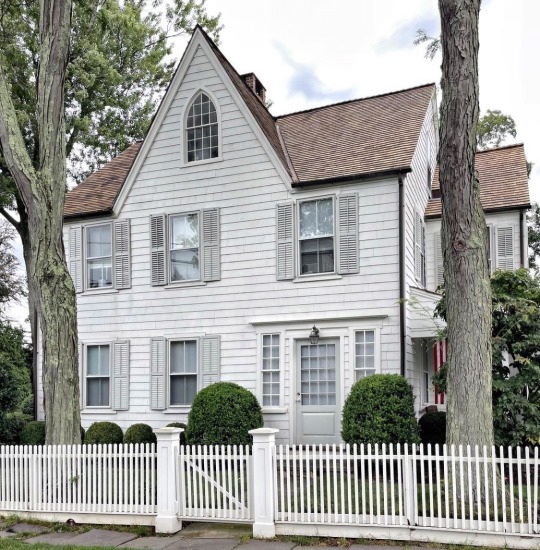
According to a dated board in the attic this house was constructed in 1803! The David Bradley House in Southport, Connecticut is a beautiful example of a traditionally designed house. The house was owned for a number of years by David Bradley, who worked as the village’s postmaster.
📸: buildingsofnewengland | IG
#home & lifestyle#historic houses#historical homes#exterior#exterior architecture#architecture#house history#house#conneticut#white picket fence#vintage#vintage house
1 note
·
View note
Text

LOCAL HISTORY PROGRAM
Researching the History of Your Home
Learn about the historical resources at the library and across the county that will help you piece together a history of your Minneapolis house, neighborhood or property. We’ll explain and demonstrate resources, emphasizing online resources in the Digital Collections that will allow you to jump-start your research from home – including permit records, maps, city directories, photos and more. This class is best suited for researching properties in the city of Minneapolis, though some resources will be county-wide.
Register online for one of the following sessions.
Saturday, March 4, 10-11:30 a.m. – Walker Library
Saturday, April 1, 10-11:30 a.m. – Pierre Bottineau Library
Saturday, April 29, 10-11:30 a.m. – Washburn Library
11 notes
·
View notes
Text
I think it's so adorable that early humans took wild gourds - a tiny fruit that hollows out as it dries, making it float - and decided to make something out of it

they thought the tiny fruit was so good that they bred it for thousands of years, making it larger to form into bowls and cups, and different shapes to become bottles and spoons

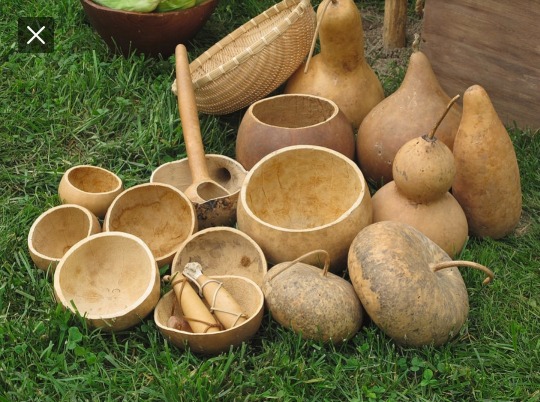
and musical instruments
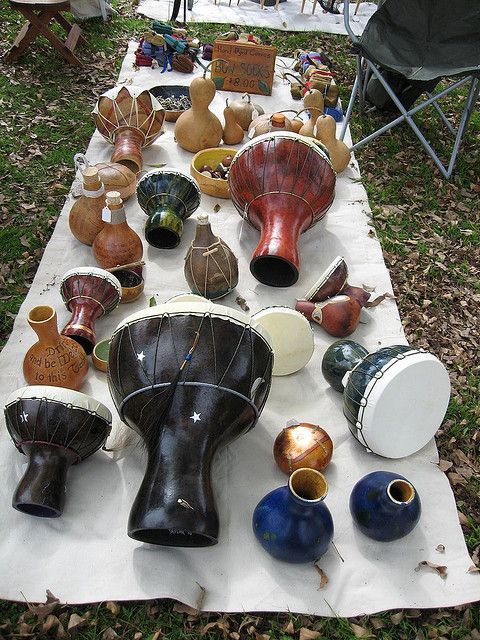

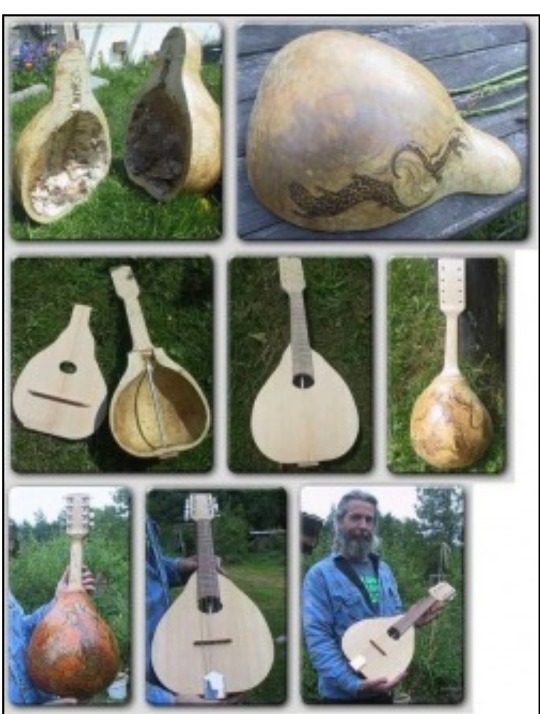
And then, people took the hollow gourds they farmed, and they turned them into houses for birds. We adapted them into the perfect houses for birds, and now there are specific breeds of birdhouse gourd just for making into birdhouses

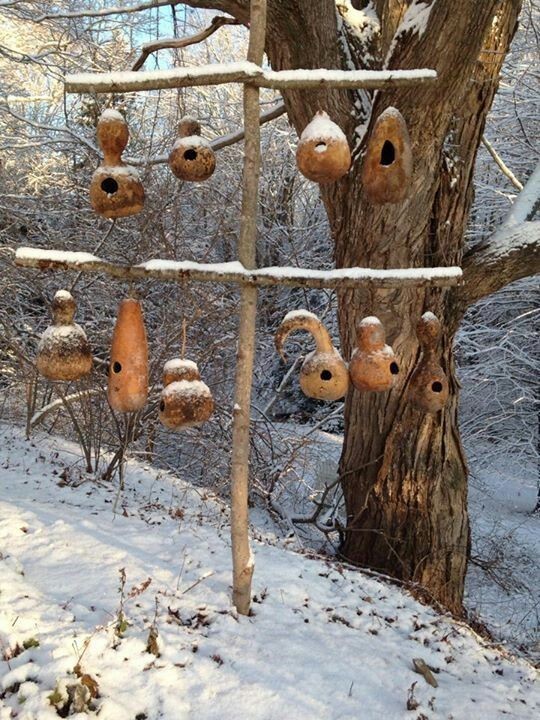
And humans dedicated gardening space and time and thousands of years of breeding to make the gourds so absolutely perfect for birds, that there is a species of bird that lives almost exclusively in them
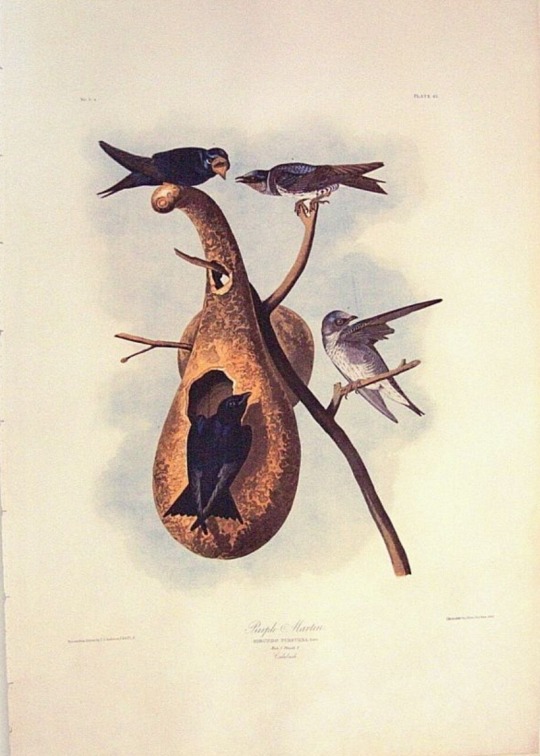
#yes I KNOW i posted about this the other day but *crying* i just love plant domestication and the history of agriculture#and humanity's positive affect on the ecosystems we live in#mine#image IDs in alt text#hmm. I'm gonna tag this#permaculture#just to pspsps @ that community to look at how cool gourds are please everyone grow birdhouse gourds and give cavity nesters places to live#i don't think mine will become fully ripe before i get my first frost :( next year i need to start gourds indoors#i didn't want to grow them before because i didn't have much garden space but now i do and i need to grow all of them#i might be. a little obsessed with gourds. but also i saw a pair of purple martins flying by the road last year#and i had never seen one before then! and i need to see more of them#i have a few hundred barn swallows but i need more birds flying around my house. more!!#and also i have a ton of invasive cavity nesting species around here. house sparrows and starlings.#gotta make up for those things competing with native birds for nest dites#*sites#the invasive birds very often win :/#that's why they're invasive#i really do need to start trapping them....
31K notes
·
View notes
Text

• Woman's Evening Wrap.
Date: 1925
Artist: Designed by House of Worth, Paris (ca. 1858–1952)
Medium: Silk velvet with metallic supplementarty wefts.
#fashion history#history of fashion#fashion#vintage clothing#vintage fashion#vintage#1920's fashion#1920's#woman's evening wrap#house of worth#silk velvet#1925
1K notes
·
View notes
Text

Abbotsford, Melrose, United Kingdom,
The Home of Sir Walter Scott,
#art#design#architecture#history#luxury lifestyle#style#luxury house#luxury home#united kingdom#abbotsfors#sir walter scott#melrose#gardens#landscaping#garden design#landscape design#scotland
4K notes
·
View notes